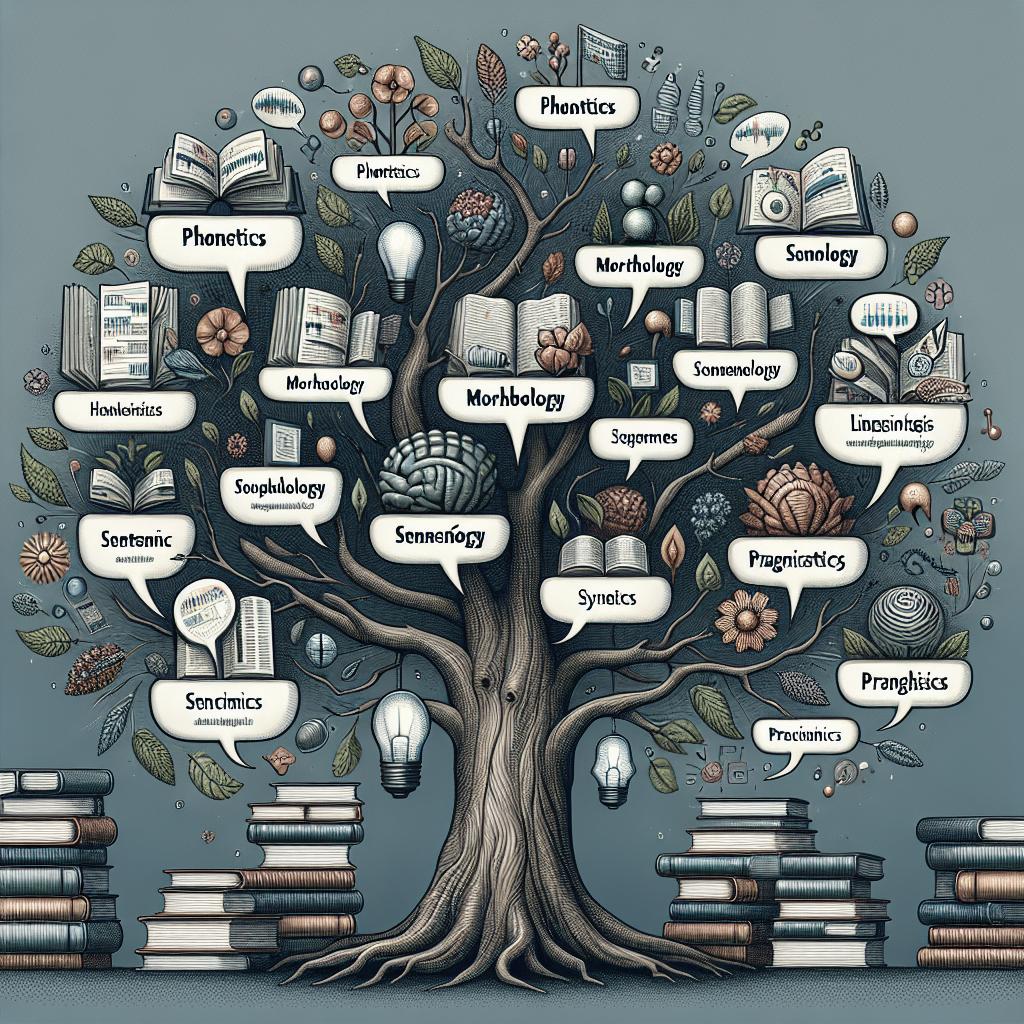<>
In today’s rapidly evolving world, technological advancements have significantly impacted various aspects of our lives, including how we communicate. This article delves into how technology has influenced the English language across different periods and industries. From the historical evolution of language to the online era, the piece examines how the internet has shaped modern English. We also explore the role of technology in language education, assessing its benefits and challenges for learners and educators. To conclude, a detailed table summarizes these impacts, providing a clear overview of how technology continues to influence the English language and communication skills.
Language through the ages
Language has always been a living, evolving entity. From ancient script on cave walls to the beautifully crafted manuscripts of the medieval era, human communication has come a long way. The basic structure of a language can undergo significant transformations over time, influenced by migrations, invasions, and cultural exchanges. In earlier times, language evolved more slowly, often taking centuries for notable changes to become evident. Written language was the primary mode of preserving and transmitting language, requiring scholars and scribes to meticulously document and replicate texts. This slow pace meant that the evolution of language was organic, driven mainly by human interaction and the influence of dominant cultures and languages.
Enter the internet
The advent of the internet marked a revolutionary shift in how we communicate. The digital world has connected people from different corners of the globe, facilitating the exchange of ideas and languages at an unprecedented rate. Suddenly, linguistic changes that used to take generations could happen within a few years or even months. The internet’s influence on language is multifaceted. Online platforms like social media, blogs, and discussion forums have given birth to new forms of slang, abbreviations, and even grammar rules. Expressions and terms that originate in one part of the world can quickly gain global traction, making language less static and more fluid.
What impact has technology had on the evolution of the English language
The English language, in particular, has experienced significant changes due to technological advancements. With the rise of the internet and digital communication tools, English has adopted a plethora of new words, phrases, and even emojis. The rapid dissemination of information has led to the spread of ‘Internet English,’ characterized by acronyms like ‘LOL,’ ‘BRB,’ and incorporating international expressions due to the mixing of cultures online. Moreover, predictive text and autocorrect features on smartphones have altered the way we write. These technologies often suggest commonly used words or phrases, impacting the choices we make while composing texts and causing a shift towards more standardized language forms.
What is the impact of technology on the language
Technology has been both a blessing and a bane for language. On one hand, it has democratized access to information and communication, enabling people from various backgrounds to converse and share ideas. This leads to a more diversified and enriched vocabulary. However, there’s also a downside. The convenience of digital communication often results in shorter attention spans and a reliance on abbreviations and shorthand, which may erode traditional language skills. Texting, instant messaging, and social media posts prioritize brevity, sometimes at the expense of grammatical correctness and depth of expression.
How has technology contributed to language change
One of the most notable contributions of technology to language change is the acceleration of linguistic trends. In the pre-internet era, language changes were gradual, often taking decades to become ingrained in society. In contrast, the digital age has drastically reduced this timeframe. New words and expressions can go viral almost overnight, thanks to social media platforms and viral content. The internet’s role as a linguistic melting pot has led to hybrid languages, where elements of different languages and dialects mix, creating new forms of communication.
Does technology affect language development
Technology undeniably plays a crucial role in language development, particularly among younger generations who are digital natives. Children today are exposed to a wide range of vocabulary and linguistic structures through online content, games, and interactive learning tools. While this exposure can enhance vocabulary and comprehension skills, it can also lead to fragmented language learning. The omnipresence of technology might displace traditional reading and writing activities, potentially affecting the development of critical language skills like syntax, grammar, and deep comprehension.
What is the impact of technology on language education
Language education has transformed dramatically with the advent of technology. Tools like language learning apps, online dictionaries, and digital flashcards have made language learning more accessible and interactive. Resources that were once confined to textbooks are now available at the tap of a screen, enabling learners to study at their own pace. Moreover, virtual classrooms and online courses have broken down geographical barriers, allowing students to receive high-quality language education regardless of their location. This global access to language education fosters a more inclusive learning environment, offering opportunities to a broader audience.
What is the impact of technology on English language teaching and learning
The impact on English language teaching and learning is particularly pronounced. Technological tools like interactive whiteboards, digital textbooks, and language learning apps have enriched the traditional classroom experience. Teachers can use multimedia resources to create more engaging lessons, catering to different learning styles. Online platforms also offer students the chance to practice their English skills with native speakers through conversation exchange programs. Additionally, the availability of online assessments and feedback tools provides immediate evaluation, helping students and teachers identify areas for improvement more efficiently.
How has the Internet changed the English language
The internet has introduced a new lexicon to the English language, characterized by internet slang, acronyms, and even memes. Terms like « googling, » « selfie, » and « hashtag » have transitioned from niche jargon to everyday language. This continuous influx of new words reflects the dynamic nature of English as influenced by technological trends. Furthermore, the phenomenon of internet-based communication has contributed to the informalization of language. Emails, tweets, and instant messages often prioritize a conversational tone over formal writing styles, leading to a more relaxed approach to language norms.
How does technology benefit English language learners
Technology offers numerous benefits for English language learners. Interactive language apps like Duolingo and Babbel provide a gamified learning experience, making vocabulary and grammar learning more enjoyable. These apps often employ adaptive learning techniques, tailoring lessons to the user’s proficiency level, thereby enhancing the learning experience. Additionally, access to a vast array of online resources, such as YouTube tutorials, podcasts, and e-books, allows learners to immerse themselves in the English language contextually. This exposure to varied content helps improve listening and comprehension skills, offering a well-rounded language education.
Can technology enhance language teaching and learning
Indeed, technology can significantly enhance language teaching and learning. With the rise of Artificial Intelligence (AI), educators can utilize tools that offer personalized learning experiences. AI-powered language apps can analyze a student’s progress and adjust the difficulty of lessons accordingly, ensuring a customized learning path. Virtual Reality (VR) and Augmented Reality (AR) are also making headways in language education. These technologies can create immersive learning environments, allowing students to practice language skills in simulated real-world settings. Imagine practicing Spanish in a virtual Spanish café or learning English by visiting a virtual tour of London—all from the classroom or home.
Does technology improve English communication skills
Technology has the potential to significantly improve English communication skills. Communication platforms like WhatsApp, Zoom, and Skype enable real-time interactions with native speakers, providing practical language practice. Video conferencing tools are especially beneficial for developing conversational skills and pronunciation, offering a more interactive experience than traditional methods. Moreover, forums, blogs, and social media platforms allow learners to participate in discussions, thereby enhancing their written communication skills. These platforms help learners understand nuances and cultural contexts, which are crucial components of advanced language proficiency.
How effective is the use of modern technology in teaching English
The effectiveness of modern technology in teaching English is evident through various success stories and research studies. Blended learning models, which integrate traditional teaching with digital tools, have shown to be particularly effective. These models offer the best of both worlds: the structured learning environment of a classroom and the flexibility of digital resources. However, the effectiveness of technology also depends on how it is implemented. Poorly integrated technology or an over-reliance on digital tools without adequate pedagogical support can lead to suboptimal outcomes. Therefore, it is crucial for educators to receive training on effectively incorporating technology into their teaching methods.
How does technology help English language learners stay motivated to continue learning
Motivation is a key factor in successful language learning, and technology offers numerous ways to keep learners engaged. Gamified learning apps provide instant rewards and feedback, which can motivate learners to progress through levels and challenges. The sense of accomplishment and competition these apps offer can be incredibly motivating. Additionally, online communities and forums allow learners to connect with fellow language enthusiasts, creating a sense of camaraderie and shared goals. Virtual study groups and language exchange partnerships offer social support, making the learning process less isolating and more engaging.
Future Prospects
| Aspect | Impact of Technology |
|---|---|
| Language Evolution | Accelerates vocabulary changes, introduces new slang/acronyms, merges cultures. |
| Language Development | Enhances vocabulary and comprehension but risks fragmenting traditional language skills. |
| Language Education | Offers interactive, accessible learning tools, and breaks geographical barriers. |
| English Language Teaching | Enriches curriculum with multimedia resources, offers practice with native speakers, provides instant feedback. |
| Communication Skills | Improves through real-time interactions, forums, and social media, understanding cultural context. |
| Motivation | Gamified apps, online communities, and virtual study groups help keep learners engaged. |


